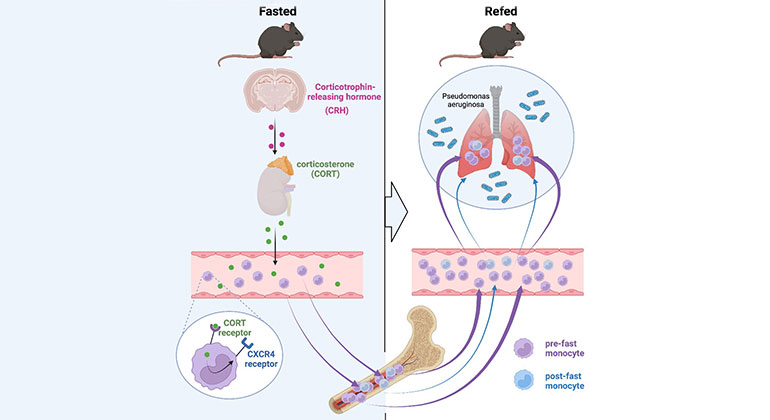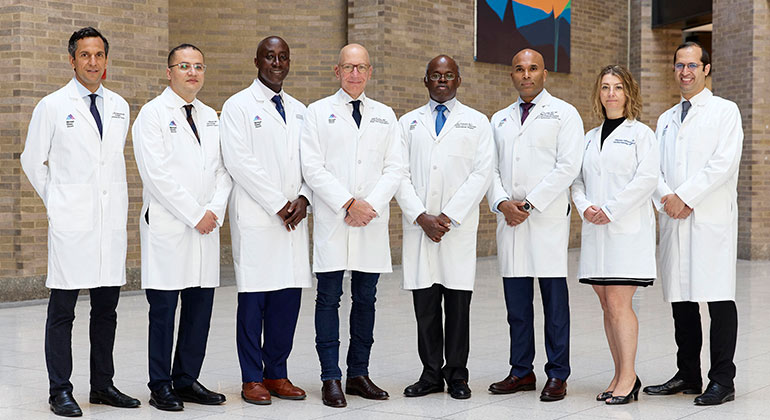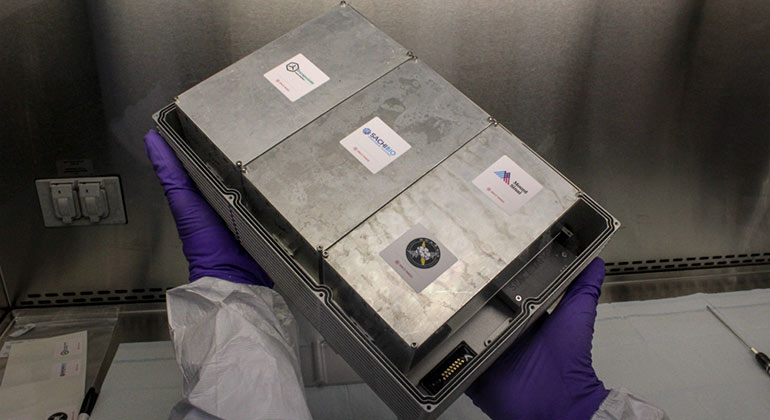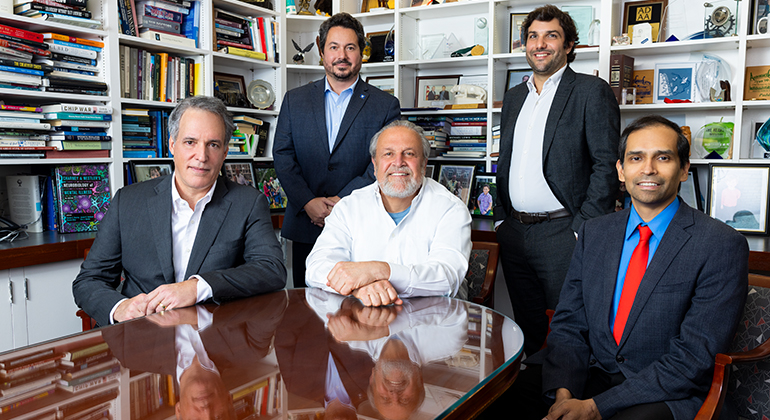A New Window of Opportunity to Prevent Cardiovascular and Cerebrovascular Diseases
Neuroimaging tests can reveal brain changes resulting from vascular disease risk factors before the appearance of any signs or symptoms of cardiovascular or cerebrovascular disease.
Future prevention and treatment strategies for vascular diseases may lie in the evaluation of early brain imaging tests long before heart attacks or strokes occur, according to a systematic review conducted by a team of cardiologists, neuroscientists, and psychiatrists from Icahn School of Medicine at Mount Sinai and published in the October issue of JACC Cardiovascular Imaging.
For the review, Mount Sinai researchers examined all relevant brain imaging studies conducted over the last 33 years. They looked at studies that used every available brain imaging modality in patients with vascular disease risk factors but no symptoms that would lead to a diagnosis of diseased blood vessels (vascular disease) in the heart or brain, or periphery (e.g. arms and legs).
The review demonstrates that patients with high blood pressure, diabetes, obesity, high cholesterol, smoking, or metabolic syndrome, but no symptoms, still had visible signs on their neuroimaging scans of structural and functional brain changes long before the development of any events related to vascular diseases of the heart (heart attack) or brain (stroke).
"This is the first time we have been able to disentangle the brain effects of vascular disease risk factors from the brain effects of cardiovascular and cerebrovascular disease and/or events after they develop," says the article's lead author, Joseph I. Friedman, MD, Associate Professor in the Departments of Psychiatry and Neuroscience at Icahn School of Medicine at Mount Sinai. "Moreover, subtle cognitive impairment is an important clinical manifestation of these vascular disease risk factor-related brain imaging changes in these otherwise healthy persons."
Dr. Friedman added that, because diminished cognitive capacity adversely impacts a person's ability to benefit from treatment for these medical conditions, early identification of these brain changes may "present a new window of opportunity" for doctors to intervene early and improve prevention of advancement from vascular disease risk factors to established cardiovascular and cerebrovascular diseases. His team is currently testing these hypotheses in ongoing studies at Mount Sinai.
"Patients need to start today to control their vascular risk factors, otherwise their brains may forever harbor physical changes leading to devastating heart and vascular conditions impacting their future overall health and even cognitive decline causing diseases like dementia or when it exists it can accelerate Alzheimer's," says study author, Valentin Fuster, MD, PhD, Director of Mount Sinai Heart, Physician-in-Chief of The Mount Sinai Hospital, and Chief of the Division of Cardiology at Icahn School of Medicine at Mount Sinai. "Our publication raises the possibility that these early brain changes are major warning signs of what the future may hold for these asymptomatic patients. These high risk patients, along with their doctors, hold the power to modify their daily vascular risk factors to help halt the future course of the manifestation of their potentially looming cardiovascular diseases."
"We hope our publication serves as a primer for cardiologists and other doctors interpreting the early neuroimaging data of their patients who may be high risk for vascular disease," says senior article author Jagat Narula, MD, PhD, Director of Cardiovascular Imaging, Professor of Medicine and Philip J. and Harriet L. Goodhart Chair in Cardiology at Icahn School of Medicine at Mount Sinai. "These subtle brain changes are clues to us physicians that our patients need to start to lower their vascular risk factors always and way before symptoms or a cardiac or brain event happens. This simple step to lower vascular risk factors can have huge impacts on global prevention efforts of cardiovascular diseases."
Researchers identified the following impact of key vascular risk factors on the structural and functional brain health of asymptomatic patients:
- Hypertension is associated with globally appreciable brain volume reductions,
connecting brain fiber abnormalities, reduced brain blood flow, and alterations in the normal pattern of synchronized brain activity between different regions. - Diabetes is associated with connecting brain fiber abnormalities, reduced brain blood flow, and alterations in the normal pattern of synchronized brain activity between different regions.
- Obesity is associated with brain volume reductions, reduced brain blood flow and metabolism.
- High total cholesterol and LDL cholesterol are associated with brain volume reductions, and connecting brain fiber abnormalities. In addition, high triglycerides is associated with reduced brain blood flow, and high total cholesterol is associated with reduced brain metabolism.
- Smoking is associated with brain volume reductions, and alterations of the normal pattern of blood flow. In addition, it causes reduced MAO B (Monoamine Oxidase B) which metabolizes dopamine, the neurotransmitter chemical that controls the brain's reward and pleasure zones.
- Metabolic Syndrome is associated with a greater burden of silent brain infarcts (SBIs), visible only on MRI, which represents subclinical cerebrovascular disease. In addition, it is associated with connecting brain fiber abnormalities, and alterations in the normal pattern of synchronized brain activity between different regions.
About the Mount Sinai Health System
Mount Sinai Health System is one of the largest academic medical systems in the New York metro area, with more than 43,000 employees working across eight hospitals, over 400 outpatient practices, nearly 300 labs, a school of nursing, and a leading school of medicine and graduate education. Mount Sinai advances health for all people, everywhere, by taking on the most complex health care challenges of our time — discovering and applying new scientific learning and knowledge; developing safer, more effective treatments; educating the next generation of medical leaders and innovators; and supporting local communities by delivering high-quality care to all who need it.
Through the integration of its hospitals, labs, and schools, Mount Sinai offers comprehensive health care solutions from birth through geriatrics, leveraging innovative approaches such as artificial intelligence and informatics while keeping patients’ medical and emotional needs at the center of all treatment. The Health System includes approximately 7,300 primary and specialty care physicians; 13 joint-venture outpatient surgery centers throughout the five boroughs of New York City, Westchester, Long Island, and Florida; and more than 30 affiliated community health centers. We are consistently ranked by U.S. News & World Report's Best Hospitals, receiving high "Honor Roll" status, and are highly ranked: No. 1 in Geriatrics and top 20 in Cardiology/Heart Surgery, Diabetes/Endocrinology, Gastroenterology/GI Surgery, Neurology/Neurosurgery, Orthopedics, Pulmonology/Lung Surgery, Rehabilitation, and Urology. New York Eye and Ear Infirmary of Mount Sinai is ranked No. 12 in Ophthalmology. U.S. News & World Report’s “Best Children’s Hospitals” ranks Mount Sinai Kravis Children's Hospital among the country’s best in several pediatric specialties.
For more information, visit https://www.mountsinai.org or find Mount Sinai on Facebook, Twitter and YouTube.

Mount Sinai Awarded Grant to Assess Music’s Impact on Well-Being, Depression
Apr 27, 2023 View All Press Releases
Skipping Breakfast May Compromise the Immune System
Feb 23, 2023 View All Press Releases







